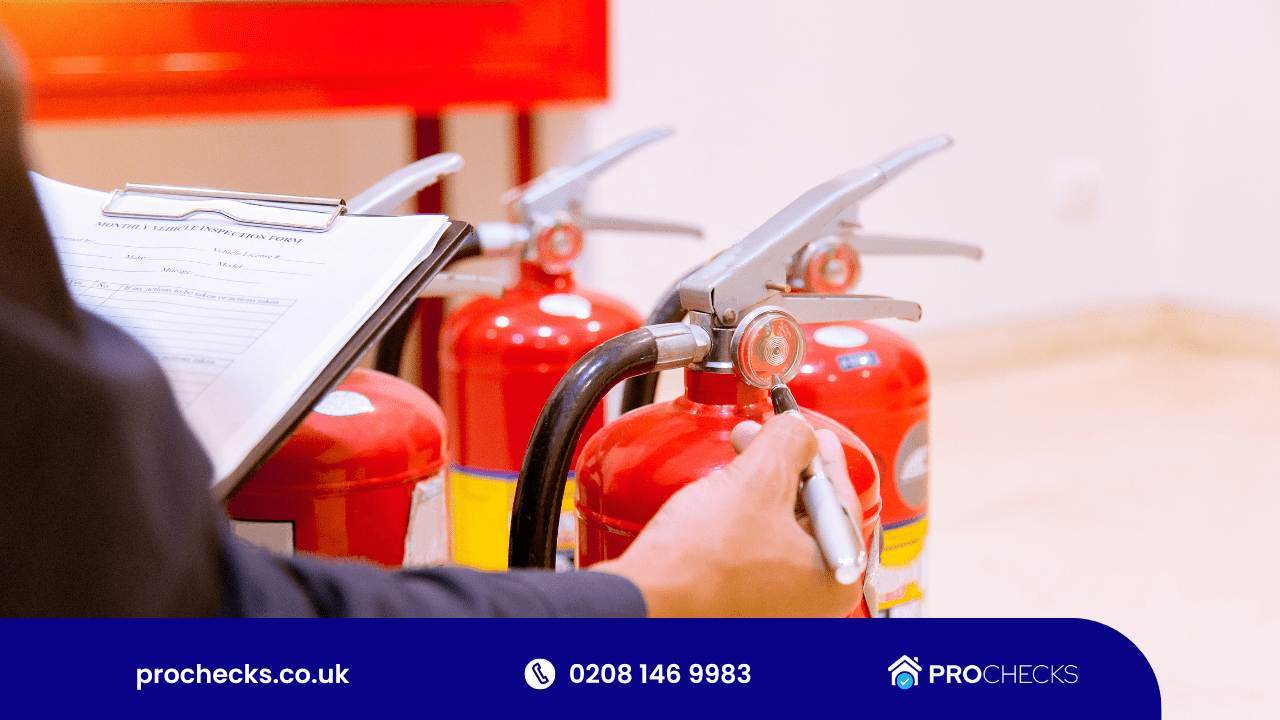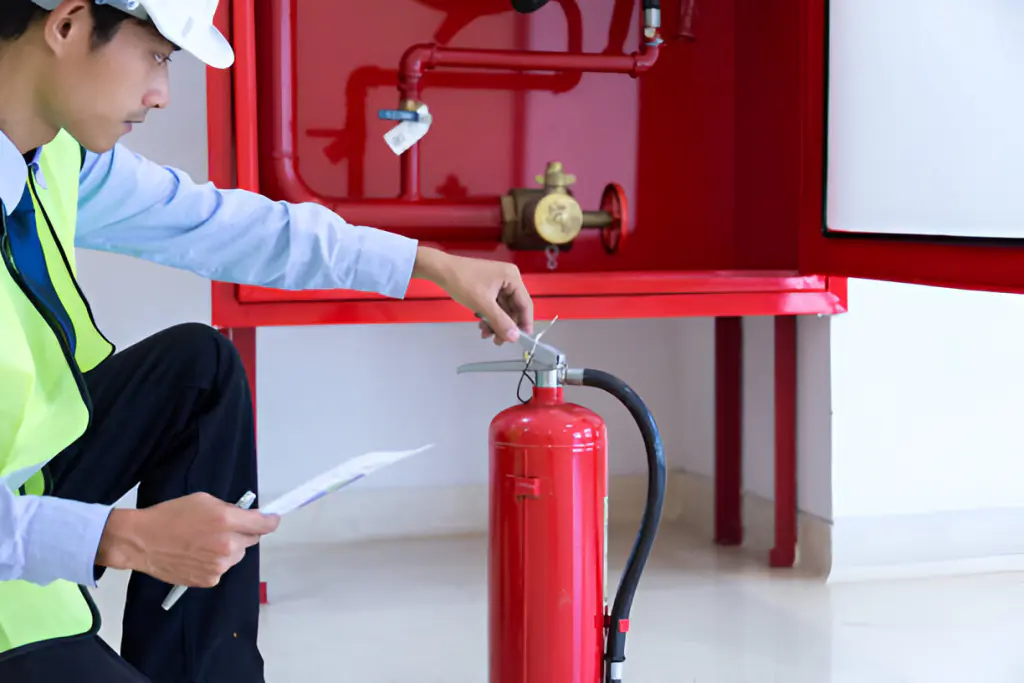Fire extinguishers are essential safety tools that require careful attention to ensure they remain functional and effective when needed most. The validity of these devices, typically ranging from 5 to 15 years, is influenced by various factors including the type of extinguisher and the manufacturer’s guidelines. Despite these general lifespans, the question of when exactly a fire extinguisher needs to be replaced or serviced is not always straightforward. Factors such as maintenance practices, usage frequency, and environmental conditions play significant roles in determining their effective lifespan. Understanding these aspects can significantly impact safety outcomes in emergencies, where the reliability of a fire extinguisher could mean the difference between a minor incident and a catastrophic event. Let’s understand How Long Are Fire Extinguishers Valid? Everything You Need to Know.
Key Takeaways
- Fire extinguishers typically have a lifespan ranging from 5 to 15 years, depending on type and maintenance.
- Manufacturers provide specific replacement guidelines and timelines for each extinguisher type.
- Regular maintenance, including monthly visual inspections and annual professional checks, is crucial for validity.
- Warning signs for replacement include incorrect pressure gauge readings, corrosion, and blockages in the hose or nozzle.
- Compliance tags, indicating the last service date, must be up-to-date to ensure the extinguisher’s validity.
Why Proper Maintenance of Fire Extinguishers Is Crucial
Ensuring the regular maintenance of fire extinguishers is paramount for effective emergency response. Adhering to established fire safety protocols, maintenance best practices, and inspection frequency is not only a mandate but a fundamental aspect of safety management.

Regulatory standards dictate that fire extinguishers must undergo thorough inspections at least annually by a certified professional to ensure functionality and compliance with current safety codes.
Beyond professional inspections, organizations must implement rigorous training programs. These programs should educate all personnel on the proper use and routine check-ups of fire extinguishers.
User responsibilities include conducting monthly visual inspections to verify that the extinguisher is accessible, properly sealed and shows no signs of physical damage or corrosion. The gauge should be checked to confirm that the pressure is within the safe operating range.
Documentation of these inspections is equally important as it supports compliance audits and enhances the efficacy of the fire safety strategy.
Mastery of these elements ensures that in the event of a fire, operational extinguishers are available to mitigate risks effectively, protecting both human life and property.
Fire Extinguisher Lifespan: How Long Do They Last?
Regarding the longevity of fire extinguishers, it is essential to recognize that their lifespan varies based on type, maintenance, and manufacturer specifications. Typically, a well-maintained fire extinguisher can be expected to last between 5 to 15 years, but this estimate is contingent on adhering strictly to manufacturer recommendations and regular maintenance protocols.
Fire extinguisher testing is a critical component in assessing the functional longevity of these devices. Scheduled inspections should include checks for physical damages, corrosion, and the pressure gauge’s accuracy to ensure operational readiness. The frequency of such testing often correlates directly with the usage frequency of the extinguisher; devices in high-risk areas may necessitate more frequent evaluations.
Moreover, the replacement guidelines provided by manufacturers form an authoritative basis for determining when a fire extinguisher should be retired. These guidelines consider factors such as the results of hydrostatic testing, which is mandatory for certain types of extinguishers at specific intervals.
Lastly, storage conditions significantly influence the lifespan of fire extinguishers. Exposing units to extreme temperatures, moisture, or corrosive environments can degrade their components prematurely, thus underscoring the importance of optimal storage practices to extend their serviceability and effectiveness.
Different Fire Extinguisher Types and Their Expiration
Different types of fire extinguishers are subject to specific expiration timelines, which are crucial to understand for maintaining safety and compliance.

Each fire extinguisher type, from water and foam to dry chemicals and carbon dioxide, has unique maintenance tips, usage guidelines, and safety standards that determine its operation and lifespan.
1. Water and Foam Extinguishers
- Lifespan: Approximately 5 to 15 years.
- Usage: Ideal for organic materials such as paper and wood.
- Safety Note: Not suitable for electrical or oil fires, which can increase risk if used improperly.
2. Dry Chemical Extinguishers
- Lifespan: Between 5 to 12 years.
- Usage: Versatile for class A, B, and C fires, making them a common choice for various environments.
- Safety Note: Require thorough maintenance to prevent clogging and ensure efficacy.
3. Carbon Dioxide Extinguishers
- Lifespan: Generally up to 5 years.
- Usage: Effective for electrical fires and flammable liquids.
- Safety Note: Does not leave residue but is not effective on class A fires.
For each type, adherence to expiration dates and regular inspections per manufacturer guidelines are imperative to maintain functionality and safety.
Understanding these elements will equip users to make informed decisions about fire extinguisher maintenance and replacement.
Warning Signs That Your Fire Extinguisher Needs Replacement
Recognizing the warning signs that your fire extinguisher needs replacement is critical for maintaining the safety and compliance of your environment. Key fire extinguisher indicators must be monitored through methodical visual inspections as part of a comprehensive maintenance checklist. These indicators not only ensure safety compliance but also inform the replacement frequency necessary for optimal performance.
One primary indicator is the pressure gauge reading. If the needle points to “overcharged” or “undercharged”, immediate attention is required. A gauge in the “green” zone suggests operational readiness, whereas any deviation indicates degradation or potential malfunction.
Physical inspection should reveal no signs of corrosion, dents, or rust on the extinguisher body—these are structural weaknesses that compromise integrity and functionality. Check for a clear, unobstructed hose and nozzle; any blockage can significantly impair the unit’s discharge capability during emergencies.
The manufacturing date and last service date should be checked against industry standards for lifespan—typically between 5 to 15 years, depending on the model. Exceeding this period often leads to a decline in performance, meriting replacement.
Additionally, ensure compliance tags are up-to-date. Missing or outdated tags reflect regulatory non-compliance, necessitating immediate corrective measures.
Prioritize these inspections to uphold safety standards and mitigate risks effectively.
The Role of Routine Inspections in Extending Fire Extinguisher Validity
Routine inspections play a pivotal role in extending the validity of fire extinguishers, ensuring they remain functional and compliant with safety regulations. Regular assessments are crucial for detecting potential malfunctions or compliance issues that could impair the device’s effectiveness when needed most.

Both professional inspections and self-inspection practices contribute significantly to maintaining fire safety standards and equipment reliability.
Key Aspects of Effective Fire Extinguisher Inspections:
- Inspection Frequency: Regulatory bodies recommend monthly self-inspections and annual professional inspections. Adhering to this schedule ensures any signs of damage or wear are promptly addressed, thereby maintaining operational integrity.
- Inspection Checklist: Utilize a detailed checklist during each inspection to assess parts such as the seal, hose, and pressure gauge. This systematic approach helps in identifying less obvious issues that could compromise the extinguisher’s functionality.
- Inspection Documentation: Keeping accurate records of all inspections, including dates, findings, and corrective actions taken, is essential. This documentation not only supports regulatory compliance but also provides a historical account that can inform future maintenance needs.
Consequences of Using an Expired Fire Extinguisher
Utilizing an expired fire extinguisher can lead to severe safety hazards and operational failures in emergencies. The risks associated with using such devices are not only a matter of regulatory compliance but are critical to maintaining optimal fire safety standards. When an extinguisher surpasses its expiry date, the chemical agent inside may not discharge at the required intensity or could fail to discharge at all, rendering it ineffective in quelling a fire.
| Risk Factor | Consequence |
|---|---|
| Reduced Discharge Capability | Inadequate fire suppression |
| Chemical Degradation | Potential malfunction or hazardous leak |
| Non-compliance with Safety Codes | Legal repercussions and fines |
Understanding these expired extinguishers’ dangers underscores the importance of fire safety and emphasizes the need for rigorous emergency preparedness tips. Facilities should implement risk assessment strategies to identify and replace outdated fire extinguishers promptly. Moreover, adhering to regulatory compliance issues is not only about following laws but also ensuring that every safety measure is capable of protecting lives and property effectively. This approach is integral to fostering a safe environment where risks are minimized and emergency response capabilities are optimized.
How to Maximize the Life of Your Fire Extinguisher
To ensure the effectiveness of fire extinguishers throughout their lifespan, it is imperative to adhere to regular maintenance protocols and storage guidelines. Proper handling and storage are crucial for maintaining operational readiness and ensuring compliance with safety regulations.
It’s essential to integrate comprehensive extinguisher training and establish a routine check-up system to detect any signs of malfunction or degradation early.
Here are three pivotal steps to extend the life of your fire extinguisher:
- Regular Inspection and Maintenance: Ensure monthly visual inspections and a detailed annual review by certified professionals. This includes checking the tamper seal, ensuring the pin is intact, and verifying that the pressure gauge is in the operable range. This proactive approach not only enhances emergency preparedness but also aligns with workplace compliance.
- Proper Storage: Store extinguishers in a clean, dry environment away from direct sunlight and extreme temperatures. This prevents corrosion and pressure variation, key factors in maintaining the unit’s integrity.
- Educational Training: Conduct regular extinguisher training sessions for all building occupants. This not only boosts home safety but also empowers individuals with the knowledge to operate the device effectively in an emergency, potentially saving lives and property.
Conclusion
In conclusion, adherence to maintenance protocols and inspection schedules is imperative to ensure the functionality and safety of fire extinguishers. By recognizing the varied lifespans of different types of extinguishers and responding promptly to indicators of malfunction, users can significantly mitigate risks associated with outdated equipment. Compliance with regulatory standards not only extends the effective life of these safety devices but also enhances the overall safety environment, preventing potential hazards in emergencies.









